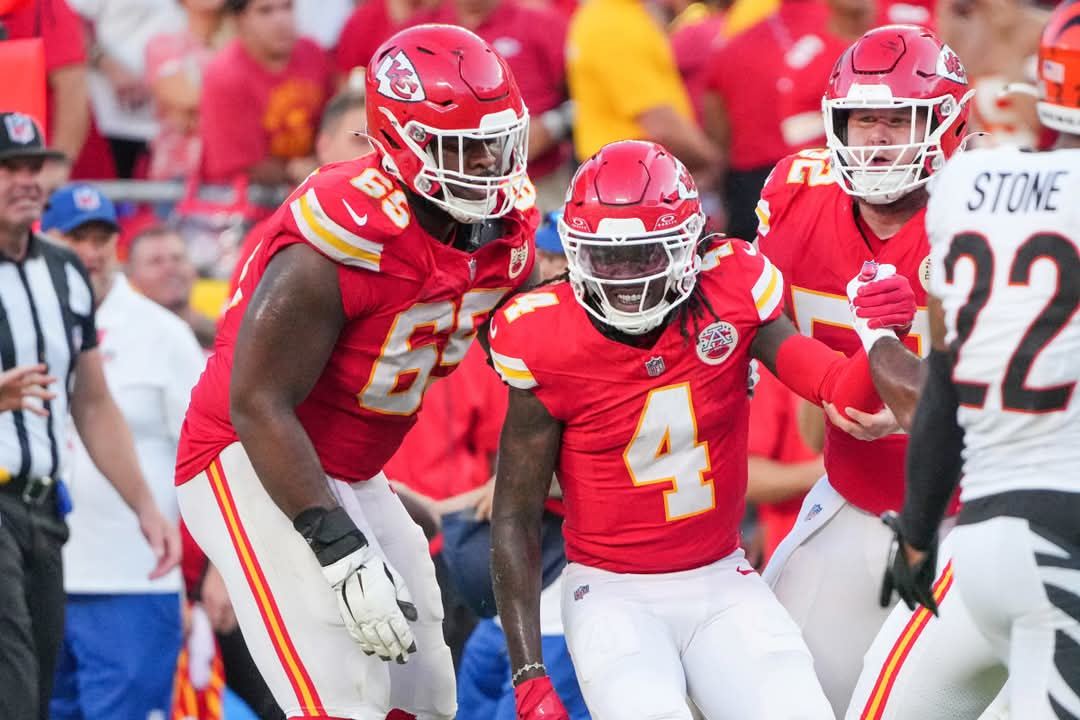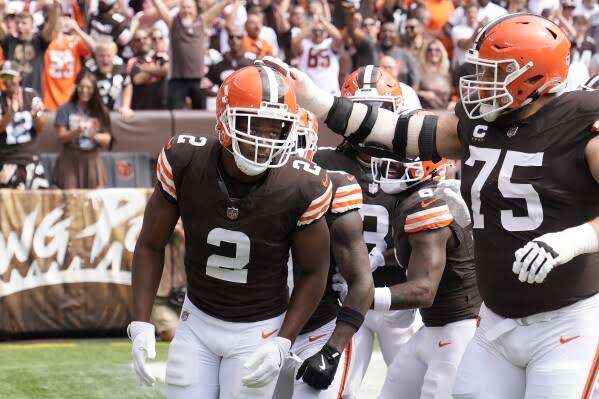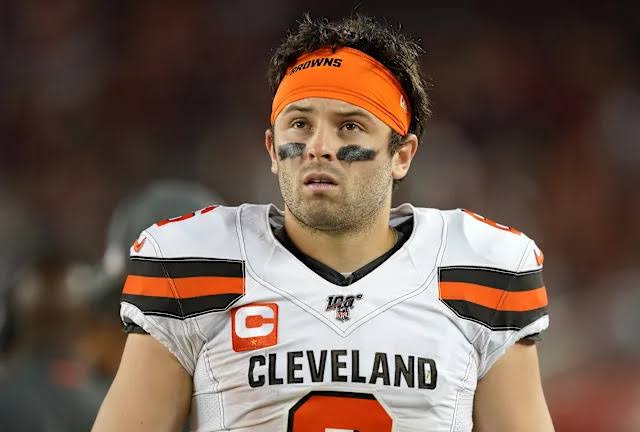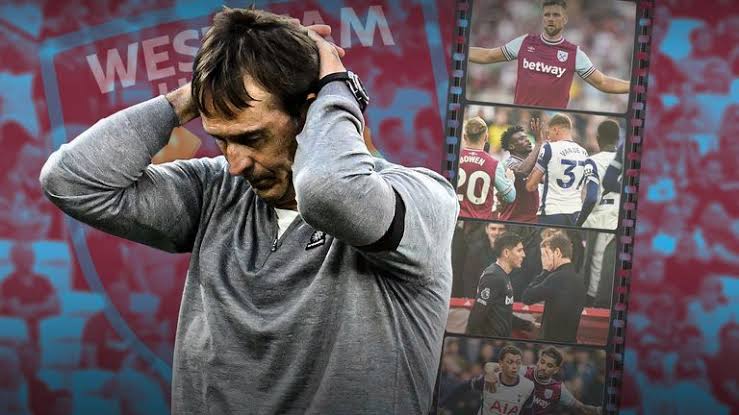The Kansas City Chiefs, fresh off their Super Bowl LIX appearance and with their sights set on another championship run, are deep into their Organized Team Activities (OTAs). These voluntary offseason workouts are a critical period for teams to integrate new talent, refine schemes, and build camaraderie before the intensity of training camp. For the Chiefs, this year’s OTAs have been particularly under the microscope, with significant attention paid to the presence and performance of key offensive players, including the much-anticipated return of wide receivers Rashee Rice and Marquise “Hollywood” Brown. While their participation has been a positive sign, one notable absence continues to draw discussion: starting right guard Trey Smith, who is navigating a complex contract situation.

The Importance of Organized Team Activities (OTAs)
Organized Team Activities, or OTAs, are a crucial phase of the NFL offseason program. While typically voluntary, they serve as the first opportunity for the entire team, including veterans, rookies, and new free-agent acquisitions, to gather on the field for structured practices. Unlike minicamps or training camp, OTAs are non-contact and do not involve pads, focusing primarily on individual drills, team walkthroughs, and 7-on-7 or 9-on-7 drills. This format emphasizes fundamental techniques, route running, defensive coverages, and the installation of offensive and defensive playbooks.
For a team like the Kansas City Chiefs, aiming for a historic third consecutive Super Bowl victory, OTAs are invaluable. They provide a foundational period for:
- Scheme Installation and Refinement: Coaches can introduce new plays, tweak existing schemes, and ensure all players are on the same page regarding assignments and responsibilities. This is particularly important for an offense as complex and dynamic as the Chiefs’, led by Patrick Mahomes and Andy Reid.
- Player Integration: New additions, whether through the draft or free agency, get their first taste of working within the team’s system alongside their new teammates. This early chemistry building is vital, especially for offensive players who rely heavily on timing and rapport.
- Rookie Development: For draft picks and undrafted free agents, OTAs are an accelerated learning environment. They get to experience the speed and demands of the professional game, receiving direct coaching and mentorship from veterans.
- Injury Rehabilitation and Conditioning: Players returning from injuries can gradually re-enter football activities under supervised conditions, ensuring they are progressing safely toward full health without the risk of contact.
- Team Building and Culture: While voluntary, consistent attendance at OTAs fosters a sense of unity and commitment. It allows players to bond off the field and reinforce the team’s culture and winning mentality.
For the Chiefs, with several new faces and key players returning from various circumstances, the work put in during these voluntary sessions lays the groundwork for success in the demanding 2025 season.
Rashee Rice’s Return and Impact
One of the most closely watched storylines heading into Chiefs OTAs was the status of second-year wide receiver Rashee Rice. Rice’s offseason has been tumultuous, marked by significant off-field legal issues stemming from a multi-car crash in Dallas in March 2025. These incidents have led to multiple charges and an ongoing investigation by both law enforcement and the NFL under its personal conduct policy. The uncertainty surrounding potential league discipline, including a possible suspension, has been a major talking point for the Chiefs’ receiving corps.
Despite these ongoing legal concerns, Rashee Rice was notably present and participating in Chiefs OTAs during the second week of sessions, after missing the first week due to an illness. This return to the practice field is a significant development for both Rice and the team. His presence, even in voluntary, non-contact drills, signals his commitment to his role with the Chiefs and his desire to prepare for the upcoming season.
From a football perspective, Rice’s participation is crucial. He was a breakout star in his rookie 2024 season, quickly becoming a reliable target for Patrick Mahomes, especially in crucial moments. He demonstrated a unique ability to gain yards after the catch and proved to be a tough, physical receiver. While his rookie campaign was cut short by a knee injury in Week 4 against the Los Angeles Chargers, which required surgery, reports from Patrick Mahomes and Andy Reid indicate that Rice has shown no limitations in his recovery. Mahomes stated that Rice “looks like Rashee,” highlighting his explosiveness and speed during offseason workouts in Texas. The Chiefs, known for their cautious approach with injured players, appear confident in his physical readiness.
However, the elephant in the room remains the potential NFL suspension. While the Chiefs are currently operating under the assumption that Rice will be available for Week 1, the league’s investigation is independent of criminal proceedings and could result in a multi-game ban. His ability to practice with the team now allows him to maintain rapport with Mahomes, learn any new offensive wrinkles, and stay in football shape. If he does face a suspension, this early work will be vital for him to hit the ground running upon his eventual return. His performance at OTAs, even without pads, provides a glimpse into his physical recovery and his continued integration into the Chiefs’ offensive scheme, which will be essential for their pursuit of another Super Bowl.
Marquise “Hollywood” Brown’s Integration
Another highly anticipated presence at Chiefs OTAs is new wide receiver Marquise “Hollywood” Brown. The Chiefs made a significant splash in free agency by signing Brown to a one-year deal, addressing a long-standing need for a proven, veteran deep threat in their receiving corps. Brown, a former first-round pick, brings legitimate speed, refined route-running, and the ability to stretch defenses vertically, something the Chiefs have arguably lacked consistently outside of Travis Kelce in recent seasons.
Like Rashee Rice, Hollywood Brown also missed the first week of OTAs but returned to practice during the second week. His absence was also attributed to illness, and his return alongside Rice has been a welcome sight for the Chiefs’ coaching staff and fans. Brown’s integration into the offense is a top priority during these voluntary sessions. Building chemistry with Patrick Mahomes is paramount, as the success of a deep threat often hinges on precise timing and understanding between quarterback and receiver. Early reports from practice indicate that Brown is quickly developing that rapport, showcasing his ability to get open downfield and make plays.
Brown’s addition is expected to have a transformative effect on the Chiefs’ offense. His speed will force opposing defenses to allocate resources to cover him, potentially opening up more space for Travis Kelce underneath and creating opportunities for other receivers. With Rice back and healthy, and the continued development of young talents like Xavier Worthy (a first-round pick in the 2024 NFL Draft, who is also showing early promise at OTAs), the Chiefs’ receiving room suddenly appears much more formidable. Brown himself has expressed excitement about the potential of the group, emphasizing the high expectations and the collective drive to achieve something “that’s never been done before.” His experience as a veteran receiver who has played with multiple quarterbacks will likely aid his transition into Reid’s complex offensive system. His presence at OTAs is crucial for him to learn the playbook, understand Mahomes’ tendencies, and establish himself as a key weapon in the Chiefs’ aerial attack.
The Notable Absence: Trey Smith
While the returns of Rashee Rice and Hollywood Brown have generated positive buzz, the most notable absence from Kansas City Chiefs OTAs has been starting right guard Trey Smith. Smith, a crucial component of the Chiefs’ offensive line, has not participated in any of the voluntary OTA sessions. His absence is directly tied to ongoing long-term contract negotiations.


